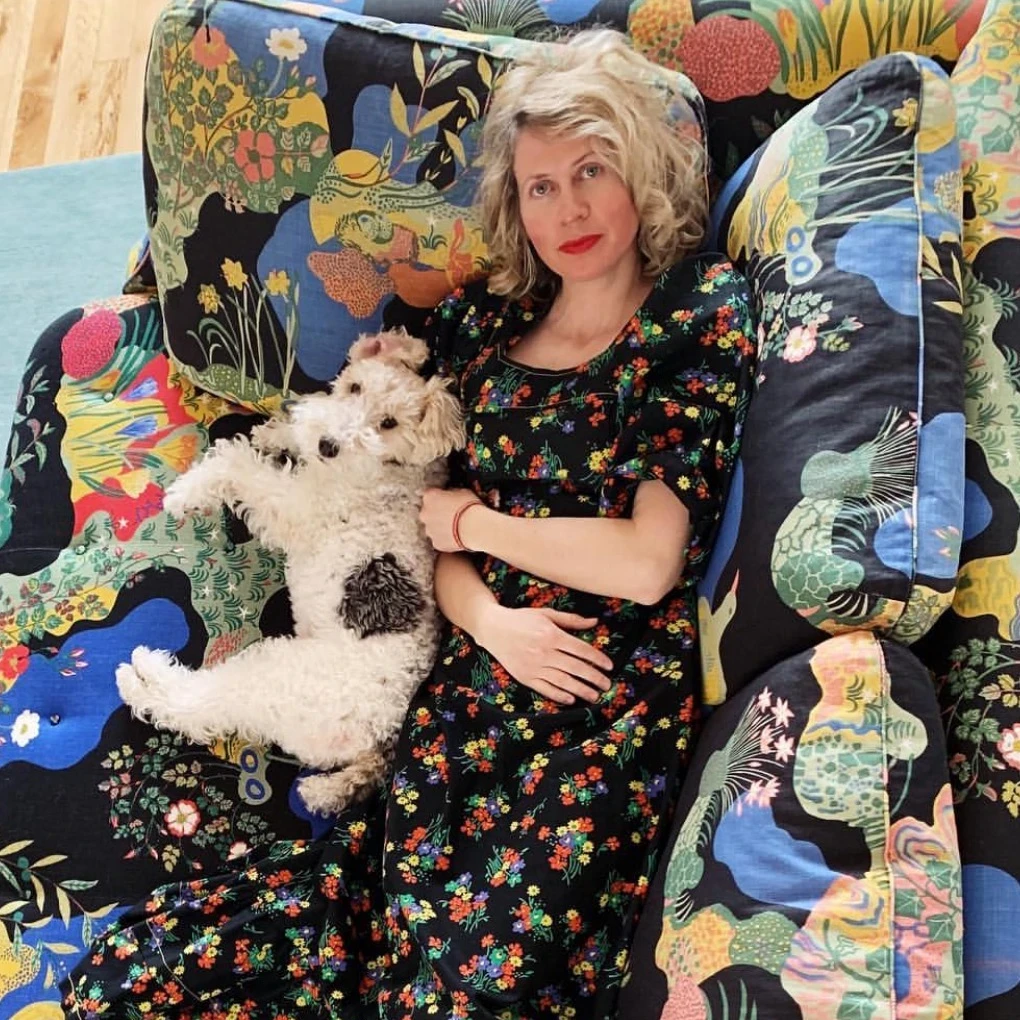The 50 States Project is a series of candid conversations with interior designers across the country about how they’ve built their businesses. This week, Provo, Utah–based designer Meta Coleman tells us about her client pet peeve, how she avoids trend traps, and how consultations on The Expert have expanded her business.
What was your path into the design world?
I think it started in my childhood. My mother grew up in Germany, and my parents divorced when I was very young, so I was mostly raised by a German mother who staunchly spoke only German in the home. She felt very strongly about keeping her heritage with her—it was her security or something. My three older siblings all were born and half-raised in Germany. And then my sister and I were born in America, but we spent our summers in Germany with my family. I never met my grandfather, but he was an architect and an art lover, and he built a home and had amazing taste.
It’s funny to think back on it because everything I like—my philosophy—all comes from that home my mother grew up in, and the way it was designed. I didn’t realize that fully until recently. I’m probably a little bit more wild with the way I design and utilize things, but the design philosophy of my grandfather’s that really resonated with me was about creating a cozy home—how you create coziness with lighting, and how you create an environment surrounded by books, and how you can create and control the mood. That was all very much a part of growing up.
I spent a lot of time in that home, and I was always with adults, so I had a very active imagination. I think it just was part of my DNA. I didn't know I was going to be a designer, though. I have a BFA in photography—and I do love to photograph, and I love telling stories. I was a photographer for a while, and then I was a stylist, but I didn't like the impermanence of it. I was never fully satisfied.
Then I did both interiors and styling for a while, but it got really hard to do both. I was so worried I would have to be cookie-cutter in my design work—and I’m not cookie-cutter—because the style around here sometimes is really boring, to be honest. It’s very much white and gray, and I didn’t want to do that. It wasn’t until I got some amazing clients that I love—I am still working on projects for them—that I realized fully that I could do it the way I wanted to do it.

How long did it take before you found those clients, and where did they come from?
I’d been doing design for 17 years, and it wasn’t until maybe eight years ago [that I started landing my goal projects]. I had clients before, but it takes a while to build up a voice and a portfolio, and I just really wanted to tell stories, and I realized that I loved telling stories in people’s homes. So to me it’s all about storytelling. It’s not about what’s trendy or what this person says you should do. It’s about the client—I’m inspired by them and their needs, and what they like and don’t like. I currently have a client who loves green, so I try to implement that in a lot of her spaces.
I have another client whose favorite color is magenta. OK, well, why not have that in your house? It’s a historic home, and the way they were living before [working with me] was like a museum and a monument to the previous homeowners, who were really amazing. But I said, “You need to live in the home as if it’s yours, because it is yours.” You can’t not live in it. I believe you should really live in your space, and it will change and evolve with time.
For me, the heart of interiors is telling a story about who you are in your home and what you love, and surrounding yourself with that and all the things that make you feel calm, happy and at peace. Those are the things that you want to bring into your life, and not because so-and-so says it’s really trendy or whatever. But obviously, it’s hard to totally avoid that, because we’re all on one another’s radar and everything’s more globalized now. But I pick things for my own home that I like only because I like them.
And when I’m choosing for clients, there’s also always a rhyme and reason. It involves a lot of layering and mixing patterns and styles. I start with a very detailed questionnaire for each client about who they are, their background, the era of the home, what they want, the problems they have in the home, all of that. It’s pretty detailed. And then I have them do homework assignments where they dissect imagery and interiors, and tell me why they do or don’t like this or that.


How many projects are you typically working on at a time?
Eight to 12.
And what does your team look like?
It’s just my assistant and me. I worked solo until about two months ago.
How did you know you were ready to make a hire?
I was stressed out all the time. I was like, “I’ve had one too many anxiety attacks—I think it’s time for an assistant.” And she’s great. She’s so helpful.
All this time, I have been doing all the logistics—the babysitting, the project managing—and I had lost a little bit of the joy because I never had enough time for the creative side. So she’s taken that off my plate and she’s systemized things, which I’ve always wanted. Now I have more time to do the creative, and I can delegate. I can hand logistics off to her and get a concept ready for a client. She also has drawing skills, so I can do my drawings and have her finish up, and then refine it together. Already, I’m like, “How did I do this without her?”
What were you looking for in that role?
I was looking for someone who was more mathematical than I am. I’m a very creative creative. I have a lot of spontaneity in me. I have ADHD too, so my brain works differently than other people’s, and it’s firing on all cylinders. I’m probably pretty exhausting to be around because I’ve got so many ideas, and it’s intense. My son is my little mini-me, and I joked with my husband: “Is this what it’s like to be married to me?” And he’s like, “It is.” Because my son’s got so much going on, and that’s how I am too.
But you do get burned out and exhausted when you’re doing it all. You can’t do it all—and you don’t have to. That’s another thing I realized. I just need to focus on my strengths and find someone who has opposite strengths. So I really wanted someone who was mathematical, who was organized, who liked organizing, and who could also do technical drawings and get into the nitty-gritty. Whereas I like to focus on the bigger-picture concept, and I also love to do the details, but I’m OK with handing some of that off. My approach to design is that I don’t need to be right all the time about everything. I just want the best, most beautiful outcome.
How has hiring an assistant affected your client relationships?
To me, it’s very important to have really good relations with all of my clients. I am a people person. I get along with people. I deal with a lot of different personalities. Actually, that’s part of the process that I really enjoy. But there are a lot of back-and-forth communications that I don’t really need to be part of. So sometimes I’ll just tell my assistant, “Oh, email this person back about that,” because it takes up so much headspace and I want to be devoting that to their designs, not the minutiae. She’s the in-between, the middle person, and it’s great. And she likes to do it, so that’s good.
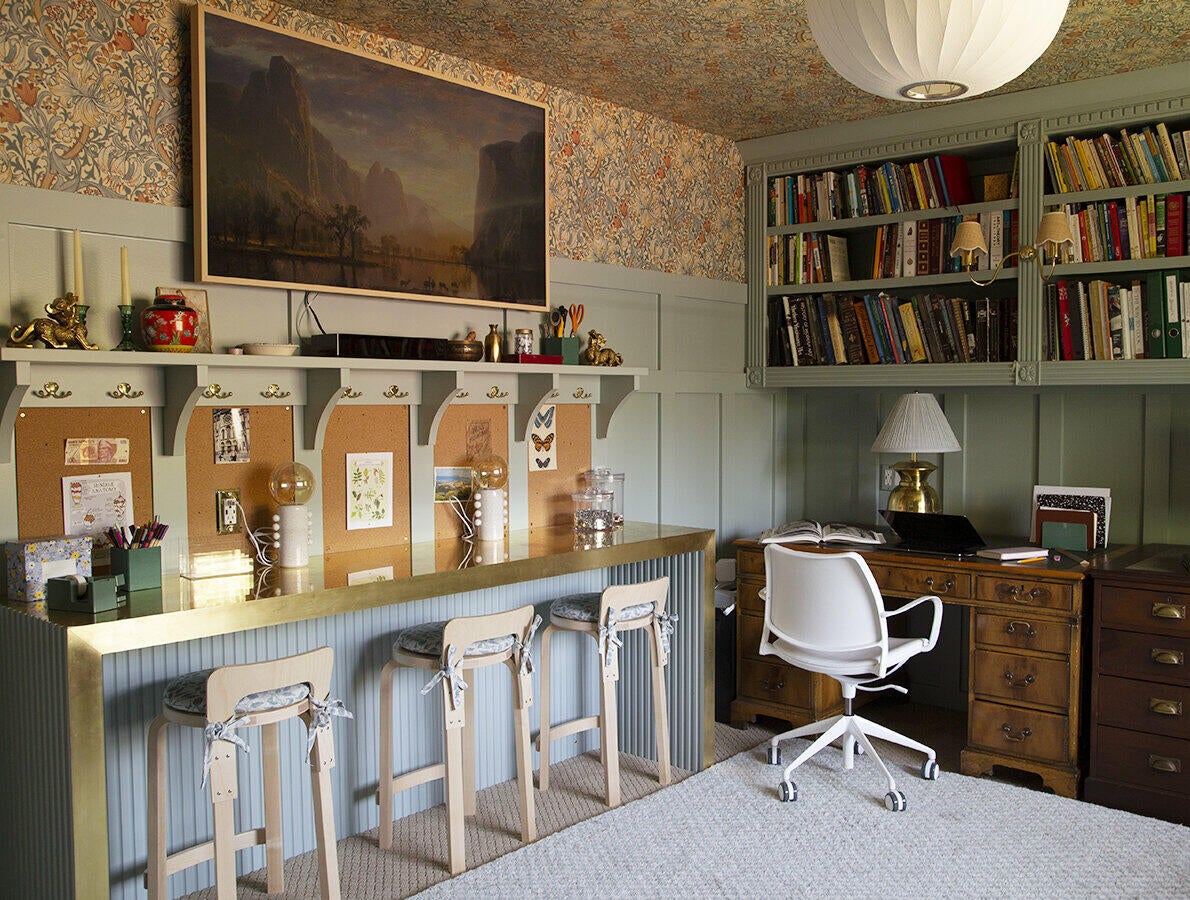
How do clients find you these days, and how do you decide what you say yes to?
I think people find me on social media and from media coverage. I had one client find me through a Domino article, and she’s been an amazing client. I did her little boy’s room. Now I’m doing her whole house. Sometimes I say to clients, “If you prefer, we can start just doing one room, and then you can see how we work together.” And sometimes people don’t have the budget for [more]. I try to cater not just to really well-to-do people. I want to democratize. That’s why I do consultations on The Expert. I also offer mood boards—the concepts and the look and the layout, and then all the products they need to do to put that together.
Especially in the pandemic boom, so many designers have raised their budget or project-size minimums. Has starting with one room been a gateway for you to really meaningful projects?
Yeah, it’s important both for me and the client because not everyone is meant to work together. Not every personality [clicks]. If you were doing an entire house and were butting heads all the time, it would be a very long, drawn-out thing. But if you do one room and realize, “Oh, that was not such a good fit,” you can move on [faster].
My goal is always to exceed client expectations. And I usually do. My goal is to bring them something that they never imagined they could have because I’m not copying what anyone else does. I’m definitely inspired by other designers out there, but my goal is never, “Oh, let’s copy this person and what they’ve got going there.” [My designs are] all very personalized, and honestly I take a little bit of offense when someone shows me an image of another designer’s work and says, “I want this exactly.” I’ll say, “No, sorry, I won’t do that. That’s not who I am. We can take the spirit of it, what we like about it, and create [something new]. But I’m not going to copy.” And for the most part, all my clients get that. That’s why they come to me—for the original thought process.
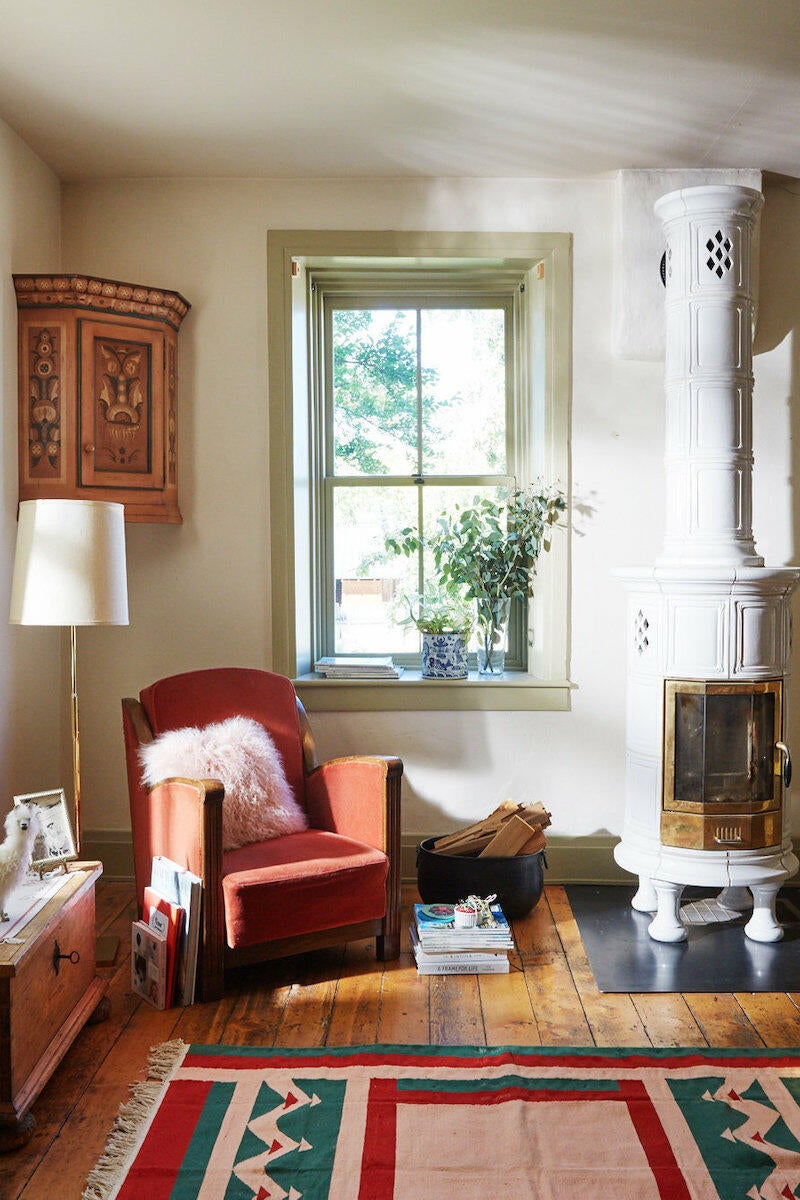
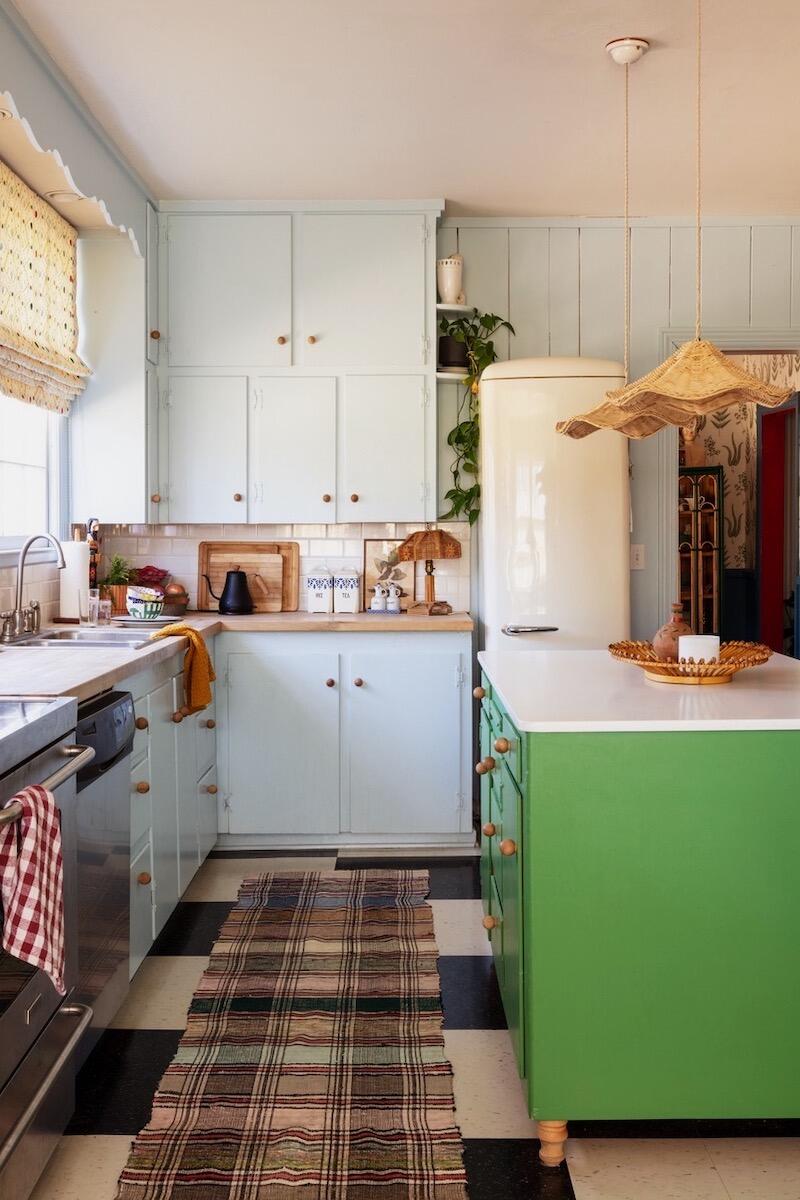
When did you start with The Expert, and how has that shifted your business?
They recruited me very early on, and at first I was like, “What? I don’t have time for this.” And then [the company’s head of partnerships] Jessica Romm Perez called and explained how it works—and I realized, “Oh, this is actually really cool.” It’s been great because I get to do what I love: Connect with people, and help them out. It’s only 55 minutes [per consultation,] and I don’t ever have to think about that space again.
I prep a little bit before the meeting. I look over the client’s materials and gather information, and I try to fill that 55 minutes with as much information as I can give them. Sometimes I worry that I overwhelm people and give them too much, but I try to give them foundational tools—color theory, texture, layering, layout, all of those things that you can take away and build upon when you’re designing your own space.
It’s really fun to meet all these people from all over the United States, and I’ve done several consults [with people] in Europe too. Talking to people is where I shine. As you can tell, I’m pretty chatty, and I don’t have a problem talking about design because I love it. Sometimes in the design industry, people can be very snooty, and I just don’t think it’s necessary. I think everybody has a right and deserves to have a cozy, wonderful home that they feel comfortable in. I don’t think it’s just for the fancy people.
You charge $650 per consultation. Is The Expert good for your bottom line as well?
Yes. I usually do three consultations a week, and I see it as almost passive income. I’m still doing something, but it’s something I don’t have to think about too much. I should probably be promoting it more. I’m not a very good PR person, at posting on Instagram and all of that.
I totally believe in abundance and that there’s plenty to go around. I want to help people as much as I can, but I get a lot of people asking me for free advice, and I can’t do that. I can’t answer questions on Instagram. I don’t have the bandwidth, the mental capacity. Putting together a really cohesive idea or plan takes time. Good design takes time and energy. That’s something people don’t understand, and it’s why I’m opposed to design shows, because they give these false ideas of timeline. Good quality design is not just done in a matter of weeks. [On TV] they show it getting demoed, and then it’s put together and maybe looks good on film, but does it really work in the space? Is it going to last?
I’m all about quality, lasting design. I use a lot of vintage. I am very much for not wasting and being eco-friendly. Most of my lighting is vintage pieces that I have rewired. That way, you can find something more special and beautiful. I use a lot of vintage furniture that I reupholster, or I sometimes have things custom-built. I also use a lot of existing client furniture. We have a throwaway society, and I think what’s so appealing to Americans about European design is that things are passed down, and then they pair something modern with it. It just goes through generations. Here, people buy a new house and change all the furniture. I don’t believe in that. I think we can utilize your grandmother’s favorite chair along with maybe some modern pieces and other antiques or vintage pieces that you have. If it has meaning to you, then it has meaning. Everything doesn’t have to be perfect. What makes it beautiful and perfect is the imperfection and the story behind it, in my opinion.

How do you get clients comfortable with imperfection?
Well, sometimes budget constraints [do that for us]. They need to use what they have, and we just add maybe a lick of paint to the chairs and some new upholstery and it’s instantly transformed. I usually ask, “What pieces do you want to keep? What do you want to transition out?” There are a lot of ways that one can go about designing and a lot of different ways it can really work.
I like to have an open-minded, organic process. I have a sofa that I bought at auction that has a big bleach mark where it was in the sun, and when I bought it the auction house said, “You should probably reupholster the entire sofa.” And I said, “No, I’m not going to. There was a life before me. This was in someone’s house, and it was probably by a window. It tells a story, and I like that.” I think we are too obsessed with everything being perfect, but then people aren’t comfortable.
We don’t feel comfortable in a house that has perfect chairs and a perfect sofa and all-white upholstery. You don’t feel like, “Oh, I want to go sit and relax and lie down in that space.” It’s not inviting. At least, that’s my opinion. I have a friend who has amazing taste and she does all things very minimal, and it is really amazing. But that’s not my approach.
How do you create that sense of ease, of relaxation? What does it take to get that right?
I think it starts with the rug, with comfortable sofas, chairs—it’s all in the layering. I like different levels of lighting. I like table lights, sconces. Rarely do I like to turn on an overhead light. I also think it’s really important to make your space work for you instead of you working for your space. So you bring things into your space that are easily accessible and at your disposal. I like to use a lot of little tables in living rooms at different heights that you can use for books or drinks or whatever you need. This way, it’s all ready for you to utilize instead of having to get up and go find something. It’s all there accessible to you.

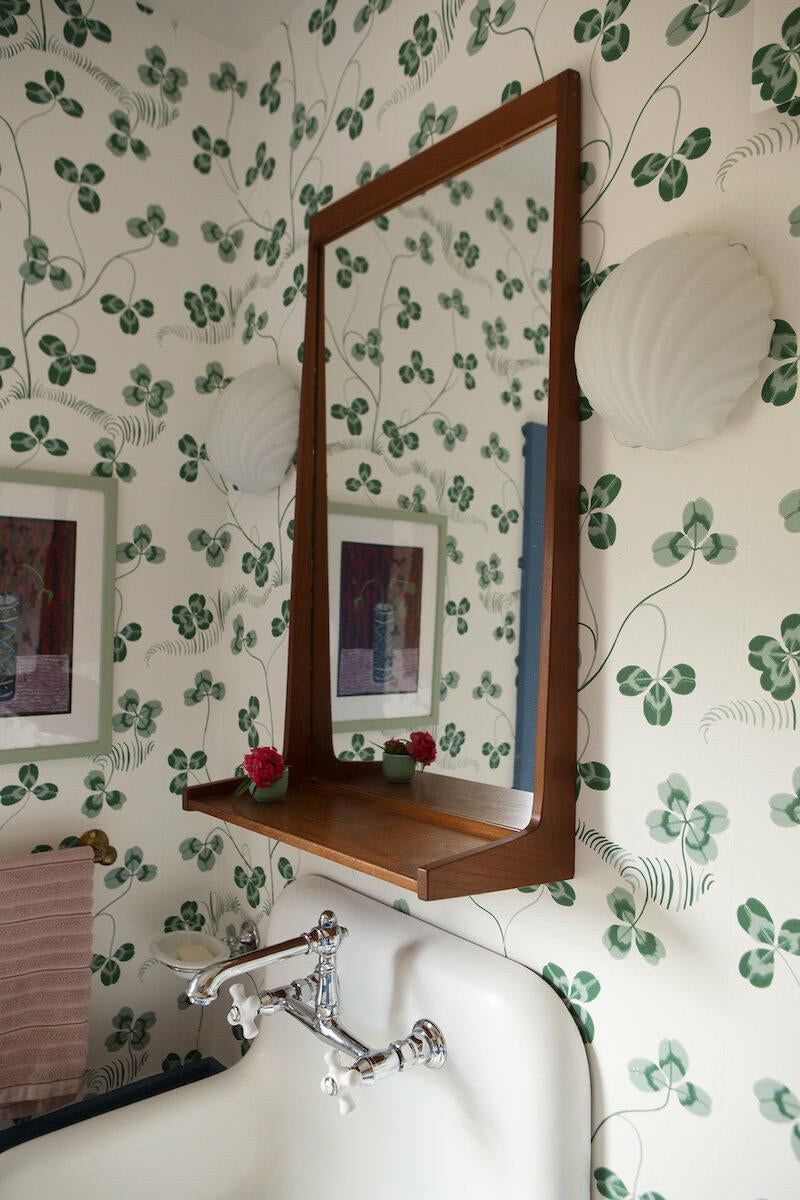
You mentioned your mood board service. How does that work?
It often comes from an Expert consult. I just finished one for an Austrian client who bought a flat in London. We did a consult, and it was so fun. It’s so fun for me because they see all these problems, and I see where it could go. And they’re stumped, which is totally understandable—it’s a lot of problems to deal with. But I thought, “OK, instead of trying to make a small hallway feel bigger, you need to accentuate the intimacy. So I propose wallpapering the entire hallway and making it feel like a jewel box. It’s crammed and really odd, so instead of trying to make it something it’s not, lean into what it is.” And so after talking with her a little bit, I said, “Well, if you’d like, I can do a mood board, too, with all these things we talked about, and go a little more in-depth with all the links of what you need—the paint, the furniture, upholstery, the lighting. I deliver it in a little package.” And so she did that, and it was really fun. A lot of my design projects are a year or two out, so it’s nice to have something that I just put together in a week or a matter of hours.
Does your sourcing change in those scenarios?
I’m trying to source things that they can get from where the clients are. So if she’s in England, I source certain places in England. I use a lot of international vendors, rso it’s not a big deal for me to find. I use a lot of European lighting. It’s a little bit of a headache. I have a guy who rewires everything for me, but it’s worth it because you get something less expensive than the big-box stores, and it’s more unique and special. All the lighting in my house is vintage. For something like upholstery, I will show them sofa-shape options, and then they’ll go find an upholsterer.
If they want to go further, I have people who can do all of that. I have a couple of upholsterers. More and more, there are websites where you can buy fabric and all of that. The Expert offers items that are purchasable only to the trade, which is great. And they’re also offering more vintage.
I think the way that the world is headed is more conscientious of where we buy, and buying timeless pieces. I’m sitting right now at an antique Biedermeier table-and-chairs set that was from my grandfather. That’s really lucky. And I hope to pass it down to my children. I hope that they like it. But then they can add their own flair. There’s nothing wrong with mixing styles and eras. It’s actually much more interesting because it can look like a catalog if you don’t.

Let’s talk about Utah for a moment. Can you tell me about your local clients and the housing market?
Yes. There’s a range. A lot of the homes that I design here are 1980s Georgian-style homes. They’re very Georgian in the symmetry and all of that, but they’ve got lower ceilings, and you’ve got details to deal with that were only amazing in the 1980s. What I tend to do is take it further back to the [original architectural] intention—if it was ’80s Georgian, let’s go back to actual Georgian but also bring in the homeowners [for their design input and needs]. History is huge, but being fresh and modern for our time is important too.
There’s also a lot of midcentury here. I just finished a midcentury project where the client wanted to maintain the integrity of the home and its era, but also add her personal touch. She wanted it to have a little bit of a Swedish country vibe. [Another client wanted to make a similar transformation, and the] kitchen will be published in a book in early 2023. All we did to change the kitchen was wallpaper the walls and paint the cabinets. We kept the tile counters, and it was a huge transformation just from those two elements. So you can do things on a lower budget. The other home involved a full renovation; we gutted the kitchen because the cabinets were very low and not great wood. But I infused midcentury [style by using a] Shaker front, and then the face frames were all wood. To me, it was a really fun hybrid of midcentury meets Swedish, Scandinavian country style.

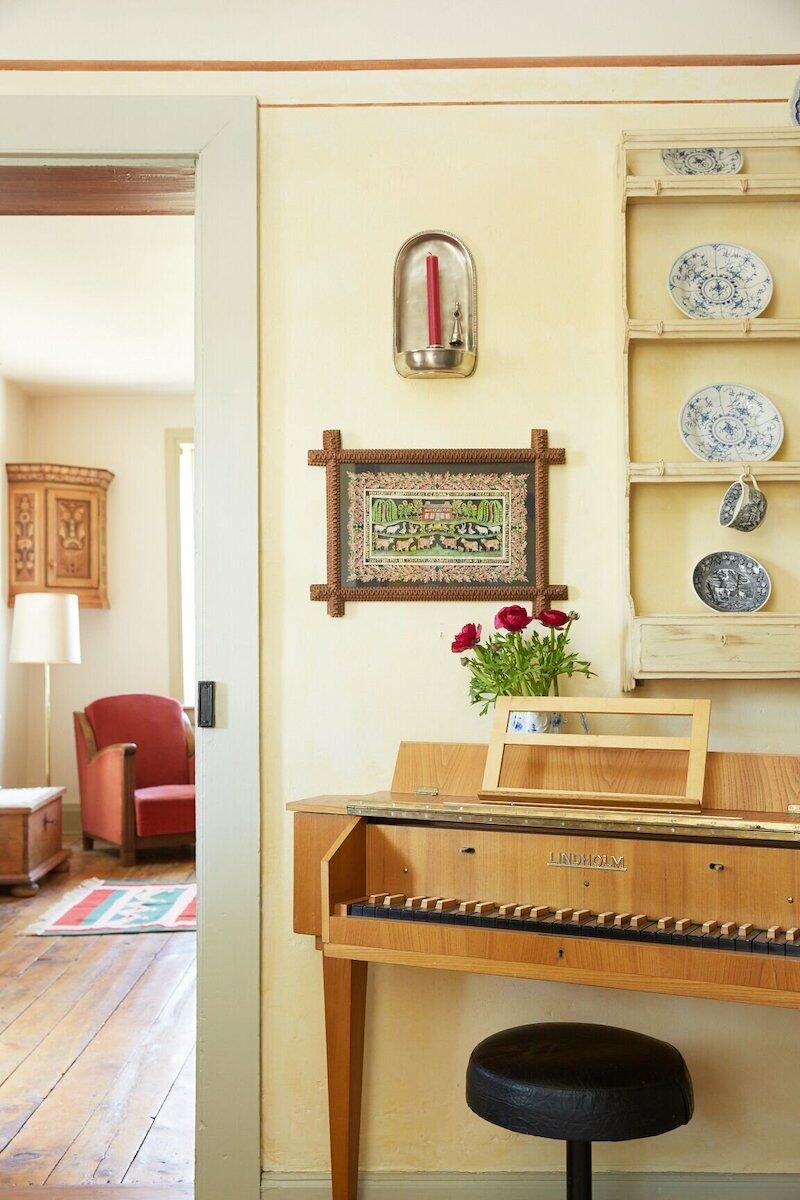
How have you approached billing for your work?
I try to get as much information as I can about the scope of the project and give clients a rough idea of cost. But what I’ve learned is that it’s not fair to me or them to stick with a set price, because inevitably, homeowners end up adding on or the nature of the project evolves. So I do charge hourly, but if they have a budget, I say, “Let’s communicate, and if we get closer to that budget where I bid, we can discuss possible solutions.” I’ve noticed that if you do that, everyone’s happier, and there will be no resentment. There needs to be open lines of communication and transparency and efficiency. I want to be as efficient and speedy as possible. I’m not trying to milk as much as I can out of them. I want to get things moving along. And I try to delegate to my assistant as much as I can and be cost-effective. But it’s also not fair to me if they add on more and then expect the same price.
What’s one thing you wish your clients knew when they first approach you?
I want to liberate people from feeling like they have to stick to trend rules. I really believe in being inspired by and embracing who you are and what you like. It might not be for everyone, but that doesn’t matter because it’s for you. You’re living in your house for you.
Maybe it takes a minute to figure out what you like. And that’s what I do for my clients. I interpret who they are and how they can reflect who they are in their spaces. We all have a story, and we’re all interesting. If you dive in deeper, you find out more about people and it really is fascinating.
What do you wish you had known when you started your firm?
It took me a long time to have the confidence that I was good. I was very hard on myself for a long time. And I still am a bit of a perfectionist in certain areas. I think a lot about everything. Last night, I couldn’t sleep because I was thinking about handles for a project. I was like, “Is it practical enough? Is this going to open?” Because I custom-designed some handles.
It’s OK if there’s room to grow, but you don’t need to beat yourself up over the process. Just go for it. Some of these young designers that have been doing it for a minute have so much confidence and probably, to be honest, not the knowledge—but they have the confidence. I feel like for a long time I had the knowledge, but not the confidence. And I wish I would’ve had a little more confidence. But maybe you gain that with experience, and experience happens over time—you don’t get that overnight.
What does success look like for you now?
Success looks like being able to pay all of my bills on time. Being able to go on vacation when I want to spend time with my family and taking off if I need to. Being able to say yes or no to a project, being happy with what I’m doing. To me, it’s very important to be loving every project I’m doing. And I can say I really do love all the projects that I’m doing. I think success is having freedom.
To learn more about Meta Coleman, visit her website or find her on Instagram.















